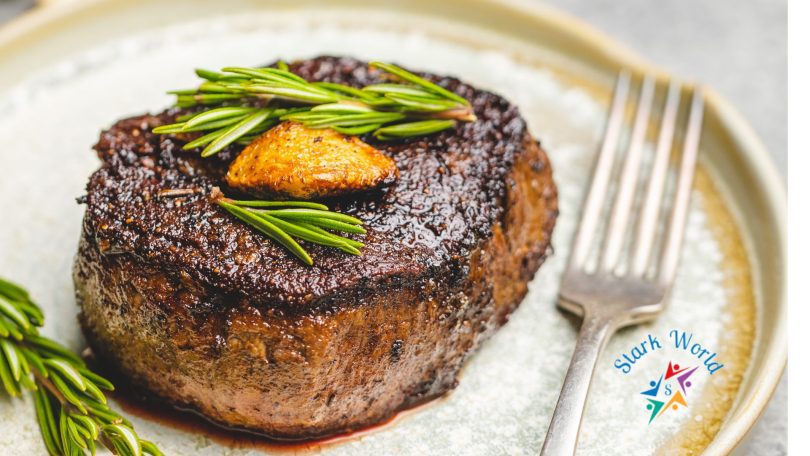Steak is a staple in many cuisines around the world, revered for its rich flavor and tender texture. But, achieving that perfectly cooked steak can often seem like an elusive art form, reserved only for experienced chefs. The reality, however, is quite different.
With the right knowledge, tools, and a dash of patience, anyone can cook a steak to rival those served in high-end steakhouses. In this comprehensive guide, we will demystify the process of cooking the perfect steak, providing you with step-by-step instructions, expert tips, and insights into the various cuts of steak. So, put on your apron, sharpen your knife, and get ready to master the art of steak cooking.
Introduction
The importance of cooking steak properly
Cooking steak properly is of paramount importance not just for the sake of taste and texture, but also for safety reasons. Undercooked steak can harbor harmful bacteria, while overcooked steak loses its juicy succulence, turning tough and unappetizing. Additionally, the way you cook your steak can significantly impact its nutritional value. Cooking at high heat can degrade some nutrients, but it can also enhance others, like iron and zinc. Properly cooked steak is a gastronomic delight – tender, flavorful, and nutritious.
Overview of the different cuts of steak and their characteristics
Understanding the different cuts of steak is crucial to achieving the desired results. Each cut has unique characteristics that influence how it should be cooked. Here’s a brief overview of some popular steak cuts:
- Ribeye: Known for its rich, buttery flavor and juicy tenderness. It has a high-fat content that renders during cooking, making it incredibly flavorful.
- Strip Steak: Also known as New York Strip, this cut is leaner than ribeye but still very tender and full of beefy flavors.
- Filet Mignon: This cut is famed for its melt-in-your-mouth texture. It’s lean and has little fat, which means it’s less flavorful than fattier cuts but its tenderness more than makes up for it.
- T-Bone: This cut offers the best of both worlds – a combination of tender filet mignon and flavorful strip steak, separated by a T-shaped bone.
Choosing the right cut of steak depends on personal preference regarding flavor, texture, and how you plan to cook it.
Step-by-Step Guide to Cooking the Perfect Steak
Step 1: Choosing the right cut of steak
Your journey to steak perfection starts at the butcher’s counter. When selecting a steak, consider your taste preference, cooking method, and budget. For a juicy, flavorful steak, opt for cuts like ribeye or T-bone.
If you prefer leaner meat, filet mignon or strip steak would be a good choice. Whichever cut you choose, look for a steak with good marbling (streaks of fat within the meat), as it promotes juiciness and flavor. Also, go for steaks that are at least 1.5 inches thick, as thinner steaks can easily overcook.
Step 2: Seasoning the steak
Proper seasoning is key to enhancing the natural flavors of the steak. At its most basic, all you need is coarse salt and freshly ground black pepper. Season your steak generously on both sides, pressing the seasoning into the meat.
For an extra flavor boost, you can also use garlic powder, onion powder, or your favorite steak rub. Remember to season the steak at least 40 minutes before cooking. Allowing the salt to penetrate the meat leads to a steak with a richer flavor.
Step 3: Preparing the grill or pan
Before you start cooking, preheat your grill or pan over high heat. A hot cooking surface sears the steak quickly, locking in its juices and creating a delicious crust. If you’re using a grill, clean the grates thoroughly and oil them lightly to prevent the steak from sticking.
If you’re using a pan, choose a heavy-bottomed one that retains heat well, like cast iron. Add a small amount of high-heat oil (such as canola or grapeseed oil), just enough to coat the bottom.
Step 4: Cooking the steak to your desired doneness
Now, it’s time to cook your steak. Place the steak on the grill or pan and let it cook undisturbed for a few minutes until it develops a brown crust. Then, flip the steak and repeat on the other side. How long you should cook your steak depends on its thickness and how you like it done.
As a general rule, for a 1.5-inch thick steak, you’ll need about 4-5 minutes per side for medium-rare and 6-7 minutes per side for medium. However, the best way to ensure perfect doneness is by using a meat thermometer.
Step 5: Resting and serving the steak
Once your steak is cooked to your liking, remove it from the heat and let it rest for at least 5 minutes. Resting allows the juices to redistribute throughout the steak, making it moister and more flavorful. To serve, you can slice the steak against the grain into thin slices, or serve it whole with your favorite sides.
Expert Tips for Achieving Steak Perfection
Selecting the right cooking method
The method of cooking you choose can profoundly impact the outcome of your steak. Grilling is a popular choice for its smoky flavor and beautiful grill marks. Pan-searing is another excellent option that gives you a deliciously browned crust.
If you have a thicker cut like a ribeye, you might want to use the reverse sear method — starting the steak in a low-heat oven until it’s almost at the desired doneness, then finishing it on a hot grill or pan for a crispy crust.
Monitoring the internal temperature of the steak
Don’t leave the doneness of your steak to guesswork. Use a meat thermometer to check the internal temperature. For a medium-rare steak, aim for an internal temperature of 130-135°F; for medium, it should be 140-145°F. Remember that the steak will continue to cook a bit while resting, so take it off the heat when it’s about 5 degrees below your target temperature.
Using a meat thermometer for accuracy
A meat thermometer is an indispensable tool for cooking the perfect steak. It ensures accuracy and takes the guesswork out of determining doneness. For an accurate reading, insert the thermometer into the thickest part of the steak, away from bone or fat.
There are different types of meat thermometers available, including instant-read and leave-in thermometers. Please select an option that matches your cooking style and personal preferences.
Searing vs. reverse searing techniques
When it comes to achieving a caramelized crust on your steak, you have two main options: searing and reverse searing. Searing involves cooking the steak at high heat for a short period, creating a beautiful brown crust.
Reverse searing, on the other hand, starts with slow-cooking the steak in a low-temperature oven until it reaches the desired internal temperature. It is then finished with a quick sear on a hot grill or pan to achieve that crispy exterior. Both methods can produce excellent results, so choose the one that suits your preferences and equipment.
Conclusion
Cooking the perfect steak is an art that requires attention to detail and a deep understanding of the process. With this step-by-step guide and expert tips, you now know how to cook a steak that will rival those served in the finest steakhouses.
Remember to choose the right cut of steak, season it properly, and cook it using the method that suits your taste. Don’t forget to monitor the internal temperature with a meat thermometer for precise doneness.
Whether you prefer a juicy ribeye or a tender filet mignon, following these techniques will ensure a steak that is cooked to perfection every time. So, fire up the grill or heat the pan, and get ready to savor the ultimate steak experience!







